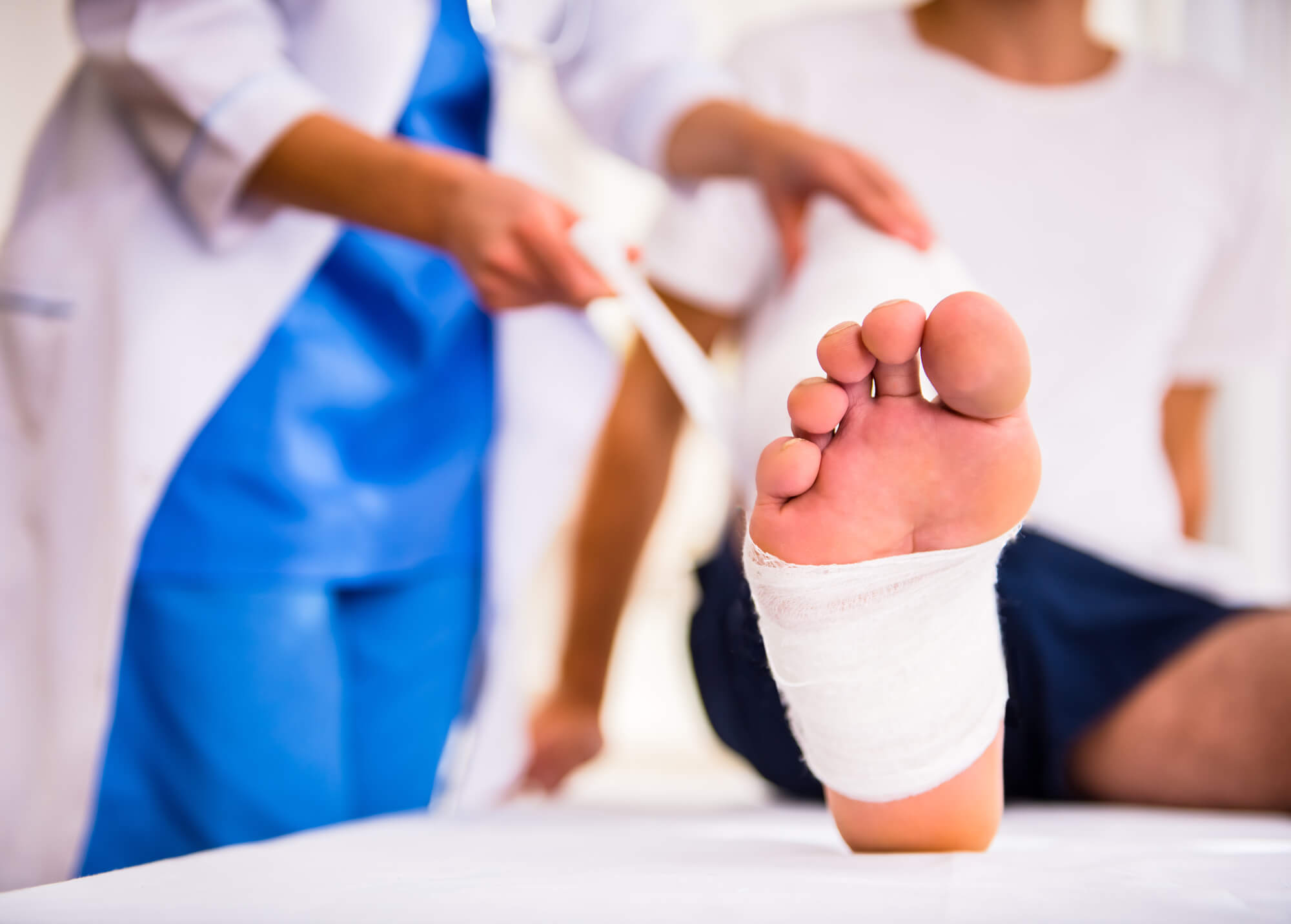Wound healing is a complicated process that involves the interplay of various cellular factors. The capacity of tissues to repair themselves after the injury depends on the type of tissue involved. In general, wounds confined to the superficial layers heal more readily while deeper wounds can scar permanently. [1] A proper understanding of the normal wound healing process is essential for podiatrists and wound care specialists in providing effective wound care to patients.
The Four Distinct Phases of Wound Healing
The wound healing process in normal adults follows a sequential pattern that can be divided into four, overlapping stages. These include:
- Homeostasis
- Inflammation
- Granulation
- Maturation
Acute wounds complete these phases within two to four weeks and result in the restoration of skin integrity. However, any disruption to the wound healing process can result in chronic wounds. An effective wound care program aims to optimize the wound healing process so that all the stages occur in a timely fashion. Therefore, it is essential for patients with chronic wounds to visit their podiatrist or wound care specialist.
Phase 1: Homeostasis
Any injury to the epidermis results in bleeding from small blood vessels. As a result, the body’s initial response to injury is to stop the acute blood loss and achieve "homeostasis". The blood vessels constrict immediately after an injury. In addition, the exposed subendothelial collagen in blood vessels activates the nearby platelets leading to the formation of a "platelet plug". The clotting cascade is triggered and results in the formation of a fibrin mesh over the platelet plug which reinforces the clot. In the absence of any clotting disorder, the process of homeostasis is complete within minutes.
The adhered platelets also release growth factors and cytokines which play a critical role in the wound healing process. Some of the cytokines that are released include fibroblast growth factor, transforming growth factor and epidermal growth factor. [2]
Phase 2: Inflammation
After achieving hemostasis, the next goal of the wound healing process is to prevent bacterial invasion at the wound site. This is achieved during the inflammation phase of wound healing. [3] The initial vasoconstriction is reversed in the second phase by vasodilation of blood vessels. Mast cells migrate to the injury site, release histamine and prostaglandin, which increases vascular permeability. In addition, neutrophils are recruited to the wound site through the release of chemical messengers from platelets and mast cells. Neutrophils are responsible for removing bacteria and devitalized tissue from the wound site. They are visible on the wound surface as slough which is yellowish fluid. The dying neutrophils are removed from the site by macrophages.
The process of inflammation lasts for about three days but can be prolonged in chronic wounds. At the end of the inflammatory phase, macrophages predominate which signals that the wound environment is now suitable for new tissue formation. [4]
Phase 3: Proliferation
The third stage - the proliferation phase - occurs within 3 to 21 days after an initial injury in a normal wound healing process. This stage is characterized by the formation of granulation tissue, collagen deposition, and angiogenesis (new blood vessel formation) at the wound site. The primary aim of the proliferation phase is to fill the wound defect.
Fibroblasts migrate to the wound site and synthesize collagen and elastin fibers which form the extracellular matrix necessary for granulation tissue formation. [5] The granulation tissue is a highly vascular tissue formed in the healing process and is a critical component of the final stages of wound healing. Due to the fragile nature of the granulation tissue, the wound must be protected from trauma to avoid disruptions to the healing process.
The cytokines released by fibroblasts and platelets and hypoxia at the wound site trigger angiogenesis which results in blood vessel growth. These blood vessels supply oxygen and other nutrients that are essential for optimum wound healing. [6]
The process of epithelialization also occurs in the proliferation phase. The migration and proliferation of peripheral cells result in the formation of an epithelial layer that bridges the wound. The entire process is complete within 48-72 hours in a clean wound.
Phase 4: Maturation
The last stage of wound healing is the maturation phase which involves cross-linking, wound contraction, and remodeling of the wound. The type III collagen which is initially laid down in the proliferation phase is replaced by type I collagen which has greater tensile strength. The increase in the concentration of type I collagen correlates with the increased wound strength seen after a few weeks of healing. The skin can regain 80% of its original tensile strength. Unfortunately, the skin is never able to return to its pre-injury strength. [7]
Myofibroblasts at the edge of the wound contract, and result in wound closure. In some wounds, wound closure is not complete which might necessitate the use of a skin flap to aid closure. After the healing process is complete, the wound will leave behind a scar. This will be firm and redder from the surrounding tissue and gradually becomes paler in the next 6 to 9 months. [8]
References:
- Martin P. Wound healing--aiming for perfect skin regeneration. Science. 1997 Apr 4;276(5309):75-81.
- Janis JE, Harrison B. Wound Healing: Part I. Basic Science. Plast Reconstr Surg.
- Li J, Chen J, Kirsner R. Pathophysiology of acute wound healing. Clinics in dermatology. 2007 Jan 1;25(1):9-18.
- Diegelmann RF, Evans MC. Wound healing: an overview of acute, fibrotic, and delayed healing. Front Biosci. 2004 Jan 1;9(1):283-9.
- Enoch S, Price P. Should alternative endpoints be considered to evaluate outcomes in chronic recalcitrant wounds. World Wide Wounds. 2004 Oct:1-2.
- George Broughton II, Janis JE, Attinger CE. The basic science of wound healing. Plastic and reconstructive surgery. 2006 Jun 1;117(7S):12S-34S.
- Koh TJ, DiPietro LA. Inflammation and wound healing: the role of the macrophage. Expert reviews in molecular medicine. 2011 Jul;13.
- Burd A, Huang L. Hypertrophic response and keloid diathesis: two very different forms of scar. Plast Reconstr Surg. 2005 Dec;116(7):150e-157e



.webp)

.avif)
